High octane passion
It’s almost impossible to grasp the scope and endeavor of Formula One racing; it’s more than just driving a really fast car along a paved road. It’s unlike any sport in the world but has everything every other sport has to offer: a long history that is shown with pride in each nation, culture, and race track — some of which have been around since Grand Prix and trophy automobile racing became popular in the early 1900s.
Simply put, Formula One is excellence.
The characters and the cars of F1 are two of the reasons why this sport is so amazing. The cars are designed to push the absolute limit that engineering and the human will can reach. Every action and reaction of these drivers and cars are accounted for, tested, theorized, and practiced to the pinnacle of performance. These athletes are making decisions in fractions of a second; a common saying in F1 is that 0.1 seconds is 100 meters gained on the track. There is no margin for error in this league because every aspect of human will is worn on the sleeve and put on the line. It’s all felt on the track by everyone who watches and participates, at every overtake, every pit stop, and every time you see the DRS flap open and the car catch the downforce. Imagine passing a slow driver on the highway — now times that speed by 30, and that’s Formula One. That’s excellence.
The heart and passion are felt through every layer of participation — of which there are many in F1, from the team principals; down through each member of the teams that, depending on a team’s budget, can amass close to a thousand employees; into the pit crews as they handle the tires and mechanics on race days; and finally into the drivers, who have the honor of driving the car at its limits on the track. Schumacher, Senna, Hamilton, and Vettel; Monza, Silverstone, Spa, and Monaco — these are names that don’t just speak to locations and of athletes, but to the human hearts that go into the pursuit of pushing the human and machine, bodies and souls, to their limits.
It’s hard to put into words what a race is like, as they are rather hard to attend. A race is an expensive event, full of glam and glitz, massive parties, and media coverage.
However, Walter Foreman, UFV’s associate director of international relations, can paint a clear picture. Foreman has been a Formula One fan since he was 14 when he was living near Hockenheim, Germany, where he saw his first Formula One race and got to see Ayrton Senna win the Grand Prix in the iconic fourth iteration of the McLaren Project, a car that would become the inspiration for the future manufacturing of the cars.
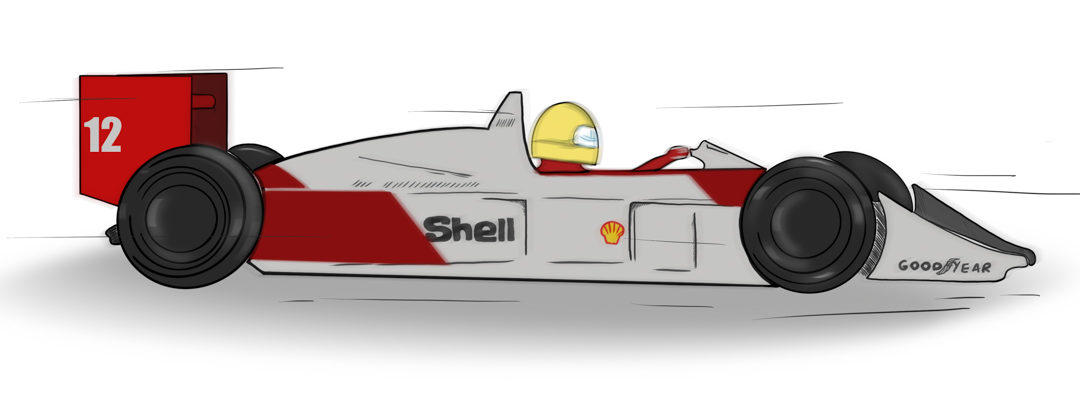
“It was so visceral.” Foreman describes the experience of seeing a race at that young age. “It literally touches every human sense. The engines are so loud, you see the cars, they look amazing in person. You can literally taste the fuel and the heat of the cars. You smell them, and you feel them. You feel the rumble of the cars before you even see them coming down the straights. And when they’re revving the engines, you feel it hit you in the chest.”
Foreman’s love for the sport didn’t end with one race. He spent some time away from the sport before finding it again in Seoul, South Korea, where he volunteered in the Williams Racing pits (back when the team was called Williams Martini) for a number of seasons while there was still a Korean Grand Prix. This was where he got to experience the other layers of Formula One.
“Another huge draw for me was seeing the logistics of it all,” Foreman says. “I can’t think of another logistical operation that is run more efficiently.”
Foreman describes the transportation of cars, catering, team offices, and garages, calling these theatrics the “F1 circus.” The transportation of cars and offices happens from race to race over land, air, and sea. Spare engines and parts, as well as lavish and beautiful motorhomes, are taken apart and transported by a third party for the racing league. Each team spends upwards of $8 million in transportation each year, and it takes six cargo Boeing 747 planes to transport the equipment by air.
“A casual fan might say, ‘Oh, F1, that’s the fast racing car league right?’ but it is a team sport. There are so many layers and dimensions,” Foreman says.
An easy way to describe this is to discuss the chaos of communication, design, and the nerve-wracking seconds that go on in and along the pit wall. The teams’ cars may look similar, but each team adds their own unique designs to make the best car that can be used in a variety of strategies and heart-racing overtakes. Pit stops are called strategically at the best times for each driver, adding another layer that makes each race so interesting. Track conditions and weather can affect how the car performs; changing pit stop strategies from a 1-stop to a 2-stop can become crucial at the end of the race. Being on fresher (oftentimes softer) tires can help drivers achieve last-minute overtakes and faster lap times, or get a crucial undercut for better track position, while still gaining the benefit of being on fresher tires to possibly gain even a single point moreover another team. Pit stops are a race against time themselves and can make or break a team’s position if the stop is even one-tenth of a second too slow.
The crucial seconds and strategies are commentated on by the delightful Sky Sports F1 team. David ‘Crofty’ Croft’s and Martin Brundle’s long anecdotes about the smallest details of the cars and teams over their choice of tea and scones are contrasted with the passion and enthusiasm for each turn, overtake, and occasional crash as the laps trickle down. Each battle and scrap for a single point is shown and fought over.
The simple phrase that sums up why the Formula One Championship is felt so passionately by its fans and characters within is told best by Foreman himself.
“I just love to see excellence. Right. And that’s what F1 is — excellence.”
The epic highs and lows of the points system
One of the factors that make Formula One so unique is the points system used to determine an ultimate champion at the end of the season. Hunting for first place is great, but a team’s strategy has to cover the season as a whole. Engineers, drivers, and team principals have to exercise a truly astonishing kind of control over their builds and manage to predict what other teams might be planning in addition to handling their own ups and downs.
Only the top ten places in a race receive points and the number they receive is proportional to the place they achieve when they cross the finish line: first gets 25, second gets 18, third gets 15, decreasing at admittedly odd intervals until 10th place, which receives one point. Points are tallied after every race, and whoever achieves the most by the end of the season wins the championship. Frequently, the best battles to watch in a race aren’t the drivers fighting for first. Landing fourth or fifth can change the trajectory of a driver’s season, so some of the best driving often comes from drivers eking out several points by pushing their way through the upper half of the pack.
Excitement remains high throughout the season due to the points system. In 2021, Lewis Hamilton and Max Verstappen were tied in points, which meant everything came down to who could come out ahead in the final race. One of the fiercest battles of the 2021 season came during the final laps of the race in Azerbaijan, where Pierre Gasly and Charles Leclerc gave everything they had at the end of an exhausting day to achieve third place; that fight was one of the standout moments of an otherwise dramatic and shocking race overall (Gasly eked out his place on the podium, in the end). They’re the kind of unbelievable climaxes you only see in sports movies, and they happen over and over in a normal season. Teammates work together to strategically move one another up as much as possible, drivers strike out on their own and break away from established strategy in the heat of the moment, and teams try to think five steps ahead of one another. The points system makes every race a don’t-miss event in one way or another and ensures that even mid-level drivers have a shot at new glory on every race Sunday.
The sleek, the sexy, the whole reason the sport exists… The Car
It’s easy to say that Formula One wouldn’t be possible without its cars. Each car is worth roughly $12 million in parts, not counting the cost that goes into developing these fantastic machines, and is the pinnacle of both human innovation and raw machine power. Every piece of the car is designed for excellence; if one nut, one flap, one screw is not accounted for and tested, the car falls apart and a season is ruined.
The 2022 car is no different; in fact, this car is specifically designed to shake up the championship, with aerodynamics at the core of the car’s engineering.
Every year, the Fédération Internationale de l’Automobile (or FIA; the governing body for Formula One) provides a set of standards and regulations that all cars have to abide by. This can include design changes (like the addition of the halo in 2018) or simply overall tweaks to the shape and structure. From this broad standard, teams develop their own unique (albeit very similar-looking) cars. Each team gets to design and make changes to their cars to get the best edge and performance out of them, and this year, teams all have taken different approaches to how features such as sideboards and wings will affect the aerodynamics to get the most competitive edge and performance out of the car.
Even with all the development done before and during the season, these cars aren’t necessarily perfect. Early testing in Barcelona showed that the 2022 cars have a porpoising issue, which will be imperative for teams to find a solution to remain as fast as possible — which, in the end, is what F1 is all about.
Here are the more important features of the 2022 car, and the ones to keep an eye on through the season.
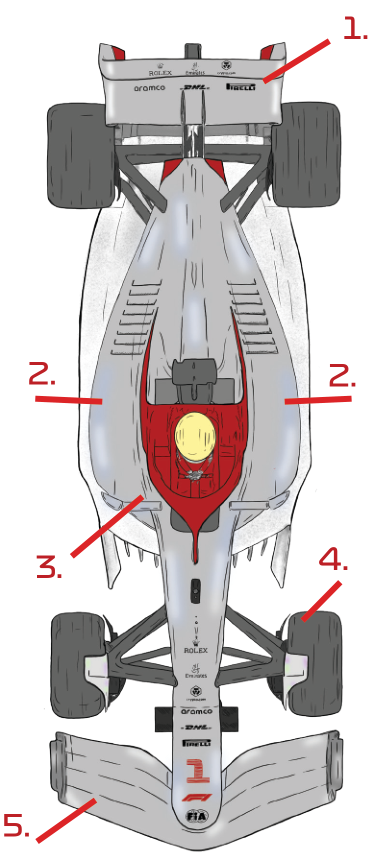
- Rear wing:
The most prominent feature of every car is the rear wing, the primary function of which is to create downforce to keep the cars on track, as well as house the DRS flap. The newly designed 2022 rear wing uses its elements, endplates, and returning beam wings to make a streamlined design with no real edges. This rear wing will generate less downforce on its own, but the redesigned returning features and the new ones will overall create more downforce together. More importantly, the new, more aerodynamic rear wing will create less turbulent airflow in the back. This means that the cars in the back and ones overtaking won’t have as much slipstream and favorable drafts to gain more speed and tow.
- Side pods:
A feature that will be talked about a lot throughout this season, and one that will be watched for further development. Sidepods are built to allow air to vent in and help cool the engine, and also direct airflow to the most ideal locations for aerodynamics. This year, side pods are one of the most varied features of cars. Most teams are taking different approaches to their side pods, with Ferrari and Mercedes having the most unique takes that will be key to watch for future car developments.
- Driver halo:
One of the more standout features of modern-day F1 cars, the halo is arguably the most key safety feature, or at least the most prominent. This curved titanium bar is connected to the car by three main points on the car’s nose and is placed over the drivers in the car’s cockpit.The Max Verstappen-instigated crash against Lewis Hamilton in 2021 demonstrated why the halo is important, as without it Lewis Hamilton would have been killed.
- Tires, winglets, and wheel covers:
The tire is a huge topic in F1, with three types of compact tires: hard, medium, and soft, on top of wet weather and intermediary tires. Each tire type is marked with a special color, and have their own unique strategic value. The new winglets over the tires will help keep clean airflow around and into the car.A returning feature on the wheels is wheel covers. Originally designed to help keep the air vortexes less turbulent, covers were banned in 2010 because they didn’t help to overtake as initially promised, and the individual teams’ development costs were too high. This year, the covers make a return and have so far been complimenting the new 18-inch tire profiles well. A new rule in 2022 is that teams are going to have to share their most innovative designs on specific items, like tire covers, to lower costs and increase performance.
- Front wing:
The most iconic and key feature to the car. The front wing of the car is the first aspect that meets the stale and rushing oncoming air. The previous front wing had a small gap between the elements and the main nose piece that created a lot of turbulent airflow around the car. This is gone in the new 2022 wing and will ensure cleaner air. The lack of the front gap means that airflow will fly over and through the car smoothly, and won’t disrupt trailing cars’ ability to slice through the air.
The Grid
MERCEDES
- Lewis Hamilton #44
- United Kingdom. Seven-time World Champion; narrowly missed out on a world-record eighth in 2021. Has smashed almost every F1 record. Unparalleled talent, passion, and hunger. It’s a privilege to watch him carve out a legacy for the ages.
- George Russell #63
- United Kingdom. His first season with Mercedes after his career start with Williams. Expectations are high for this young driver’s future in his new seat; it remains to be seen whether he’ll live up to them.
RED BULL
- Max Verstappen #1
- Netherlands. First World Championship won in 2021. Consistently battles Hamilton for the lead. Intense and unafraid to take chances; determined to show that his 2021 victory wasn’t a fluke.
- Sergio Perez #11
- Mexico. Expert at climbing through the pack and excels at team strategy throughout a long race day. Smooth, clever driver with strong analytical capabilities.
FERRARI
- Charles Leclerc #16
- Monaco. A brilliant young talent who consistently gets the best out of a sometimes faltering car. Climbs through the ranks with ease and expertly defends his position. One of the best of the younger pack.
- Carlos Sainz #55
- Spain. Bold, unafraid, and unfailingly calm. A personality that’s easy to love and a talent that’s easy to admire. Look up YouTube compilations of his interactions with former teammate, Lando Norris, if you want some heartwarming escapades.
MCLAREN
- Daniel Ricciardo #3
- Australia. Huge personality; the biggest joker on the grid with seemingly unwavering optimism. A fan favorite for good reason. Has struggled after hopping from team to team, but has every opportunity to excel.
- Lando Norris #4
- United Kingdom. Affable, light-hearted, shockingly quick on track. Pushes himself and the car to podiums and solid point finishes; he’s only improved in his career thus far. Plus he’s a Twitch streamer.
ALPINE
- Fernando Alonso #14
- Spain. Longtime driver with two World Championship wins under his belt; bested the likes of Michael Schumacher and broke records to define himself on the grid. Recently returned to F1 after a two-year break; utterly unafraid and certain of his capabilities.
- Esteban Ocon #31
- France. Ousted from his seat in 2018 to allow Lance Stroll to take it, he bided his time and gained a new place in 2020 with Renault, now Alpine. Perseverance and patience are his keys.
ALPHATAURI
- Pierre Gasly #10
- France. Bounced around by Red Bull, his career has been marked by massive peaks and valleys. Flourishing at AlphaTauri, away from the shadow cast by Max Verstappen. Ruthlessly hunts down points and podiums.
- Yuki Tsunoda #22
- Japan. Previously a huge talent in F2, but struggling more with the F1 circuit. 2022 will only be his second year at the F1 level and will undoubtedly demonstrate whether or not his previous skills will ever transfer to F1 results.
ASTON MARTIN
- Sebastian Vettel #5
- Germany. Four-time World Champion. Massively talented; it’s difficult to overstate how legendary his career already is and continues to be. Off-track, he is one of the most outspoken about world issues and F1 culture.
- Lance Stroll #18
- Canada. Son of the main team investor Lawrence Stroll, trying to shake off the “pay driver” mantle and prove his own reputation. Sometimes excels in wet weather conditions, but otherwise provides mostly middling results.
WILLIAMS
- Nicholas Latifi #6
- Canada. After a stellar season in F2 that launched him to F1, he’s never quite made the same pace. Cool and collected, but not nearly as exciting as his fellow drivers. Generally comes in towards the back of the pack.
- Alexander Albon #23
- Thailand. First at Toro Rosso (now AlphaTauri), then Red Bull, then on reserve, and now at Williams, he’s being given a second shot at F1. An underdog story that’s easy to root for. 2022 will either see his fairytale play out or crash and burn.
ALFA ROMEO
- Zhou Guanyu #24
- China. 2022’s only rookie and F1’s first Chinese racer. Moved to England at 12 to pursue motorsports; has been making a name for himself at Ferrari and Renault’s driver academies, but is untested in the pressure of an actual F1 race.
- Valtteri Bottas #77
- Finland. Calm, quiet, collected, and dazzling on the track. Unfortunately overshadowed by Lewis Hamilton during his tenure at Mercedes; stepping out from that pressure may help unleash him completely.
HAAS
- Kevin Magnussen #20
- Denmark. Raced for Haas previously from 2017 to 2020. His unexpected return comes as a replacement for Nikita Mazepin, the Russian driver recently ousted from the team. A good amount of experience; he’ll be valuable for the team and his fellow Haas driver.
- Mick Schumacher #47
- Germany. Still attempting to make his own legacy apart from his father’s (Michael Schumacher, one of the all-time F1 legends). Struggles with Haas’ poorly built cars. Here’s hoping 2022 is a new start.
Circuits:
Formula One is a global sport, with tracks and events held throughout the world. Races this year will take place in Bahrain, Saudi Arabia, Australia, Italy, the United States, Spain, Monaco, Azerbaijan, Canada, Great Britain, Austria, France, Hungary, Belgium, the Netherlands, Singapore, Japan, Mexico, Brazil, and Abu Dhabi. Past Grands Prix locations include countries like Russia (canceled as of 2022 because of the country’s war with Ukraine), South Korea (dropped in 2014 due to organizer disinterest), and Argentina (absent from the roster since 1999 because of contract disputes).
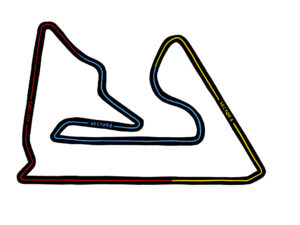 Bahrain, the Premiere: Mar. 18-20
Bahrain, the Premiere: Mar. 18-20
Bahrain held its first racing event in 2004 and was the first race track in the Middle East to host Formula One. The Bahrain track is usually in the first handful of races of the F1 season, trading back and forth with the Australian Grand Prix to be the season opener, and is an interesting circuit, combining pure raw power and intelligent technique. It’s a track that always provides fabulous entertainment with its multiple DRS zones and tight hairpin corners, and will be a good test for the manufacturers’ new cars, and where they will need to develop as the season progresses.
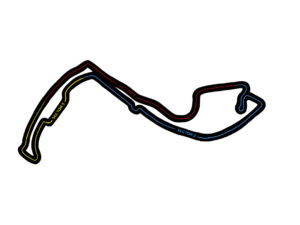 Monaco, the Legend: May 27-29
Monaco, the Legend: May 27-29
All of the prestige and glamour of F1 is exemplified in the Monaco Grand Prix. Since 1929, this track has been the pinnacle of motorsports: drivers race through narrow Monaco streets lined with celebrities and billionaires, past a harbor full of yachts, and try to ease huge cars around corners built for much smaller vehicles. Speeds tend to be slower given the tight course, but the spectacle is unlike anything else in the season. As three-time champ Nelson Piquet once said: “A win here [is] worth two anywhere else.”
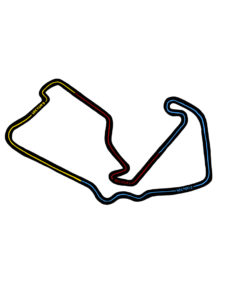 Silverstone, the British Grand Prix: Jul. 1-3
Silverstone, the British Grand Prix: Jul. 1-3
Silverstone is the staple of what the phrase “British Racing” is all about — power and elegance. One of the grand cathedrals of racing and one of the most adaptable circuits, able to fit every level of car racing from stock car to the World Endurance Championship. There is one thing that binds the circuit together — the same bond that connects all racing: speed. Lewis Hamilton has compared a flying lap on Silverstone to being in a fighter jet, and the famous corners, named after previous British racing venues, icons, and history provide some of the greatest racing any fan can ask for.
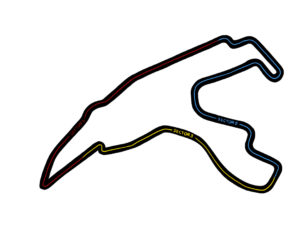 Spa-Francorchamps, the Equalizer: Aug. 26-28
Spa-Francorchamps, the Equalizer: Aug. 26-28
Usually referred to as simply “Spa,” the home of the Belgian Grand Prix has been in the F1 circuit since 1925. The track takes full advantage of a gorgeous landscape, and one of the highlights is the Eau Rouge and Radillion section, where drivers pass over a stream and ascend to a blind, winding summit (where it’s impossible for drivers to see the exit as they climb). Spa is a wonderful test of skill and speed, but its complexity has also led to a number of serious crashes and incidents.
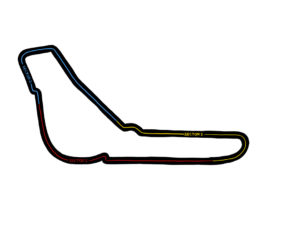 Monza, the Temple of Speed: Sept. 9-11
Monza, the Temple of Speed: Sept. 9-11
Built in 1922, Monza is the traditional home of the Italian Grand Prix and one of the oldest and original tracks in Europe. Known as the Temple of Speed for having the fastest F1 lap ever recorded, this track is every bit of a heritage and legacy track, and its 53-lap Grand Prix is an event like no other. A sea of red shirts with black stallions will be seen as the Ferrari fans will come out for their home race, and is unquestionably one of the main arteries in the heart and soul of Formula One.
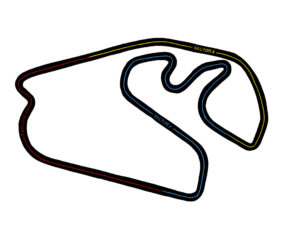 Interlagos, the Thrill Ride: Nov. 11-13
Interlagos, the Thrill Ride: Nov. 11-13
The Brazilian Grand Prix is run on the Autódromo José Carlos Pace, which was renamed in 1985 to honour the F1 driver of the same name, but the circuit is still better known as Interlagos. Terrain changes challenge drivers here; tight, high-speed corners rocket over small hills that push cars to their limits. The circuit also runs anti-clockwise, unlike most of the other Grands Prix on the calendar, which means that drivers have to handle centrifugal forces coming from the opposite side they expect. Look forward to every driver being at the top of their game for this race.
F1: Glossary
1-stop/2-stop:
A strategic maneuver that calls for the driver to come into the pits once or more than once. In dry and regular conditions, drivers are required to take at least one pit stop during the race. Using a 2-stop strategy could get the driver and car on fresher tires to get last-minute overtakes and faster laps.
Downforce:
A fact of aerodynamics that is crucial for keeping cars on track. As they move forward, air around the cars creates a downward force that is then manipulated by the car’s design in order to achieve better handling.
DRS:
DRS is the abbreviation for Drag Reduction System, which refers to the small adjustable flaps along the rear wing. The object of the DRS flap is to improve overtaking and allow the cars to get additional horsepower and speed to be able to pass. During a race, DRS can only be activated to overtake when a driver is less than one second behind a leading car, and can only be used in specific sections of the track, dubbed DRS Zones, which are typically along the longer straights. The DRS flap deactivates as soon as a driver touches the brakes.
Flying lap:
Sometimes referred to as a “hot lap,” flying laps are laps in qualifying when a driver is pushing their car to the limits to set the fastest lap time possible. Faster laps mean better position on the starting grid, and sometimes extra championship points.
Overtake:
When one driver passes another permanently. The most exciting part of the sport.
Pit stop:
Changing of tires or other easily replaceable parts in the middle of a race. Done as quickly as possible; can be as thrilling as the race itself.
Porpoising:
The curious trick of high-speed aerodynamics that results in cars bouncing along a track. Some of the 2022 cars struggled heavily with this in testing.
Slipstream:
The aerodynamic current that follows after a car produces a current of clean air (airflow that isn’t turbulent, also known as ‘dirty air’) that the cars can slip into and gain speed. Slipstreams are what makes towing possible.
Undercut:
When a trailing driver makes an earlier pit stop than the car ahead to get fresher tires for a renewed attack, or to get into position to play a long con for a later push or to try and set faster lap times to steal points.
Tow:
A tactic that involves a driver driving closer to the car ahead to reduce turbulent air for a cleaner slipstream, gaining speed without using DRS for a lighter overtake, or gaining precious tenths of seconds’ faster lap times. The strategy is often used by teammates during Qualifying.



